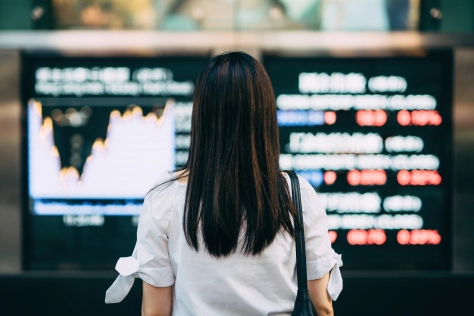
The economy & your investments
Join our Chief Economist and Chief Investment Officer as they discuss the global economy, inflation, interest rates, and the investment landscape.
New CIO Ben Seager-Scott's first thoughts
Ben's Initial thoughts regarding markets and the direction of our portfolios: “The portfolios are doing very nicely. They have good performance when I look compared to the peer group, so they are doing what's expected. I think what I will look to do is basically evolve those portfolios as the investment dynamic shifts – they worked very well until now, but as with all things investment, you can't stand still."
George: What is your philosophy on investing and how do you generate returns for portfolios?
Ben: I think investing is less about trying to precisely predict the future and more about making sure you’re being suitably rewarded in terms of expected returns for taking an appropriate level of investment risk. For me, this means making sure your base, strategic starting point is based on a rigorous framework which maximises long-term expected returns for a given level of risk and takes advantage of diversification benefits – often called the only free lunch of investing. After that, I think it is essential to look through the day-to-day noise and seek out genuine opportunities to add additional returns through tactical allocation and fund selection whilst controlling cost and risks and underpinning all of it with insight grounded in evidence.
George: Is sustainability still a major theme for investors?
Ben: Absolutely. Investing works best as a long-term, patient activity which means it is vital to think about the future of the world upon which all investment matters are ultimately based. It also means recognising and responding to changes in the long-term investment landscape driven by shifting views and behaviours of consumers, investors, citizens, corporations, and governments. Of course, the weight individual investors apply to these considerations will vary from person to person, which is why we offer an explicit Sustainable range that embeds these considerations at a fundamental level. However, for most investment areas in a general sense, I don’t think one can accurately assess the risk/return trade-off without at least some consideration to sustainability characteristics.
George: How often should one review their portfolio?
Ben: Sorry to sound like a broken record, but once again I would highlight that investing tends to work best as a long-term, patient activity. The investment team are constantly monitoring markets and portfolios, but with a view to keeping them on-track with the appropriate long-term objective. We formally carry out rebalancing once a quarter to fine-tune exposures, and it is worth highlighting that we have the scope to carry out ad-hoc changes and rebalances should the need arise, but the reality is such situations are very infrequent and unfortunately rarely add value. I say this as someone with experience of managing daily traded funds as well as portfolios with quarterly rebalancing. More frequent changes don’t tend to lead to better outcomes. Indeed, there is academic research supporting this – the effect is called ‘myopic risk aversion’. Essentially this means frequently reviewing a portfolio can lead to knee-jerk responses and an over-reaction to risk, which in turns means taking less risk than one would otherwise take and ultimately worse return outcomes. This suggests reviewing annually should be sufficient for most people.
If you would like to hear more from Ben and George you can register for our bi-monthly economy and investment webinar, the next being held on 29 May.
This website uses cookies.
Some of these cookies are necessary, while others help us analyse our traffic, serve advertising and deliver customised experiences for you.
For more information on the cookies we use, please refer to our Privacy Policy.
This website cannot function properly without these cookies.
Analytical cookies help us enhance our website by collecting information on its usage.
We use marketing cookies to increase the relevancy of our advertising campaigns.